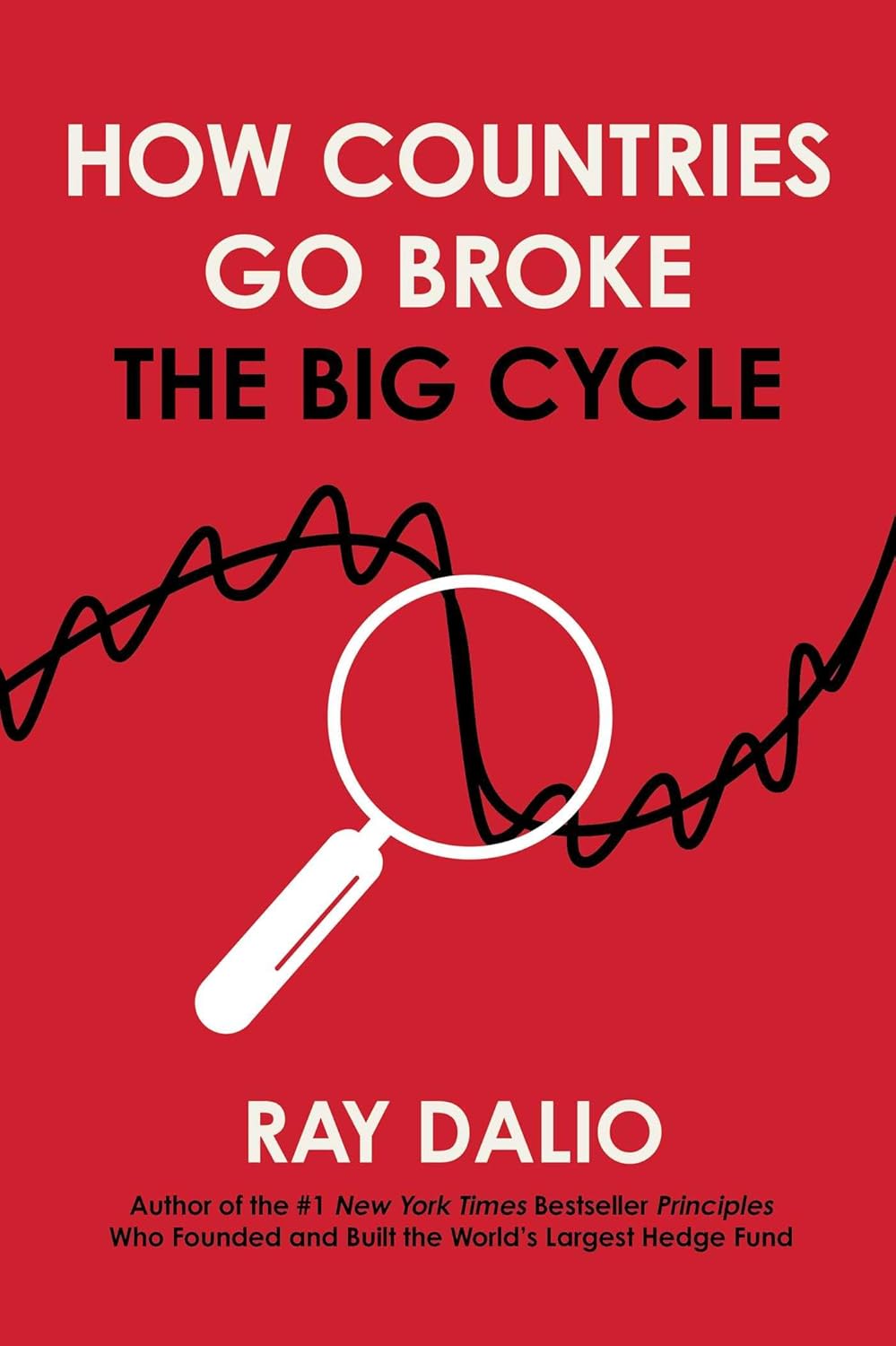This post contains affiliate links. As an Amazon Associate, I earn from qualifying purchases.
“Are we on the brink of a national debt disaster?” This alarming question has become all too real as the U.S. national debt recently topped $36.2 trillion—a level that prompted Moody’s to downgrade America’s sovereign rating in May 2025. In How Countries Go Broke: The Big Cycle, Ray Dalio unpacks why runaway debt poses the gravest threat to our prosperity and reveals the simple yet profound mechanics of his “Big Debt Cycle” and the broader “Overall Big Cycle.”
Unpacking the “Big Debt Cycle”
Ray Dalio, acclaimed investor and founder of Bridgewater Associates, distills decades of market foresight into a clear framework for understanding sovereign debt dynamics. The book is organized into four parts and 19 chapters:
- Part I – The Big Debt Cycle provides a layered, mechanical view—from simple patterns to equations—showing how credit booms lead to busts.
- Part II – A Template from History analyzes 35 historical debt crises, laying out the sequence of warning signs and progression markers.
- Part III – The Modern Cycle brings the post–World War II debt cycle into focus, comparing the U.S. case with Japan’s and China’s trajectories.
- Part IV – Looking Ahead offers Dalio’s projections for U.S. debt management and the interplay of political, geopolitical, natural, and technological forces in the “Overall Big Cycle.”
Across these sections, Dalio demonstrates that debt crises follow remarkably repeatable patterns—and that recognizing early symptoms can empower policymakers, investors, and citizens to act before it’s too late.
Why This Book Matters Now
- Timeliness: With debt levels spiking and credit-rating downgrades looming, Dalio’s rigorous template couldn’t be more urgent.
- Clarity: Unlike conventional economics, Dalio’s model explains real‐world supply-demand mechanics that drive credit expansion and contraction.
- Actionable Solutions: From deficit reduction to targeted fiscal reforms, Dalio outlines straightforward policy steps to steer clear of a debt collapse.
My Personal Take
As a finance‐focused blogger, I value Dalio’s blend of empirical analysis and accessible storytelling. His track record—having anticipated the 2008 crisis and the Eurozone debt turmoil—instills confidence that this isn’t just theory but battle-tested insight. If you’re a policymaker seeking a blueprint to curb deficits, an investor hedging against macro risks, or a concerned citizen grappling with the future of the world’s reserve currency, this book is indispensable.
Take Action
Don’t wait until the next debt spiral takes hold.
👉 Click here to grab your copy on Amazon and join thousands of readers equipping themselves to understand—and influence—the Big Cycle
